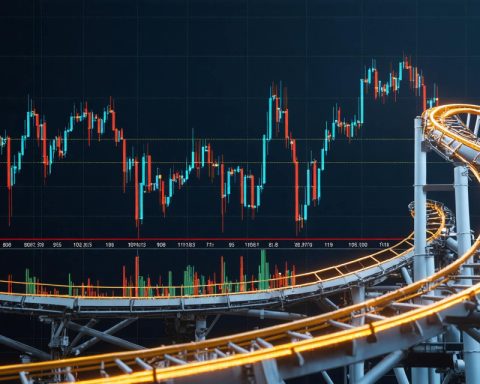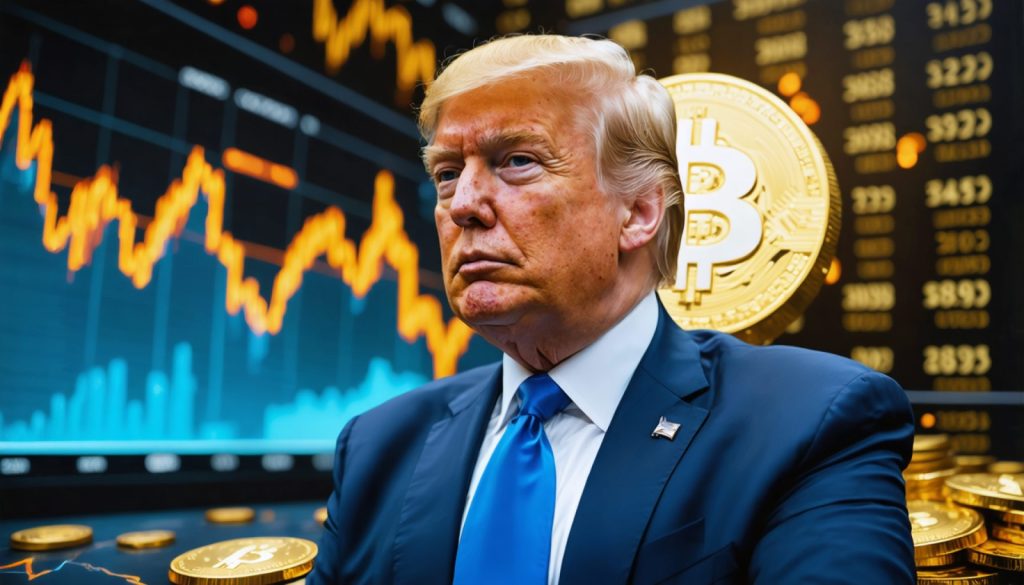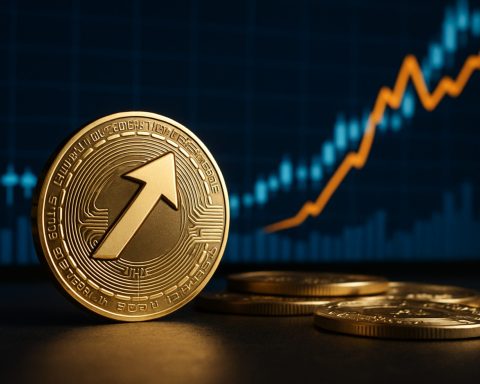- U.S. stock market experienced its steepest decline since early 2020 due to new trade tariffs.
- President Trump’s tariffs, effective April 5, imposed a minimum 10% levy on imports, impacting global trade partners.
- The Dow Jones dropped nearly 1,700 points, a 4% decline, with similar downturns in the S&P 500 and Nasdaq.
- The tech sector, especially Apple, was significantly affected, with Apple shares falling by 9.25%.
- Oil prices decreased by 5.5% amid fears of reduced global demand due to tariffs.
- The day highlighted the global economic interconnectedness and the impact of policy decisions on market dynamics.
A storm of economic uncertainty loomed over Wall Street as a sweeping policy shift sent the world’s financial nerve center into a nosedive. On a day etched into financial history, the U.S. stock market reeled from its deepest cut since the early pandemic days of 2020, driven largely by the thunderous unveiling of new trade tariffs.
President Trump’s announcement of comprehensive tariffs on imports sent shockwaves across the global economy, effective April 5. These tariffs, a blanket levy of at least 10%, targeted goods entering the United States, with additional pressures on key trade partners. The ramifications were immediate and profound, turning the lush green tickers of Wall Street into a sea of red.
On the day following Trump’s declaration, the venerable Dow Jones Industrial Average plunged by almost 1,700 points, a jarring 4% loss that rang a bell of warning across the financial world. Meanwhile, the S&P 500 sliced off nearly 275 points, and the Nasdaq, with its tech-centric composition, plummeted by a staggering 5.97%.
The tech sector bore the brunt of this economic turbulence. Apple, with its expansive manufacturing base in China, saw its stock nosedive by 9.25%. Retail giants like Walmart and Amazon faced similar downturns as investors speculated on the cost of goods increasing with the new tariffs. The repercussions didn’t stop there—oil prices were slashed by over 5.5%, driven by fears that the looming tariffs would choke global demand.
The closing bell at the New York Stock Exchange tolled with a symbolic gesture by Fiserv, the Milwaukee-based financial technology powerhouse, and its chairman, Frank Bisignano. Underlined by this act was a day that not only marked a shift in market dynamics but also mirrored the uncertainty casting shadows over future trade relations and economic policies.
This market tremor offers a stark reminder of the interconnectedness of global economies and the domino effect that policy decisions can trigger. Investors worldwide are left grappling with the reality that a single policy shift can reshape economic landscapes, leaving little untouched in its wake. As the dust begins to settle, the key takeaway emerges clear: in an era of intricate global ties, economic strategies must be navigated with foresight and a steady hand.
The Shocking Market Shift: How New Tariffs are Reshaping Global Financial Landscapes
Understanding the Economic Impact of New U.S. Tariffs
A recent policy shift in the United States, marked by the introduction of comprehensive tariffs on imports, has sent ripples throughout global markets. The announcement by President Trump to impose a minimum of 10% tariffs on goods entering the U.S. has significantly impacted various economic sectors. Here we delve deeper into the ramifications, potential strategies for navigating this economic shift, and future predictions for industries and investors.
Immediate Effects on the Stock Market
– Market Downturn: The Dow Jones Industrial Average plummeted by almost 1,700 points, the S&P 500 fell by nearly 275 points, and the Nasdaq plunged by a staggering 5.97%. These declines signify the largest market cut since the early pandemic days of 2020.
– Tech Sector Hit: Tech giants like Apple, reliant on overseas manufacturing, particularly in China, saw their stocks take substantial hits. The broader tech sector, being heavily exposed to global supply chains, bore the brunt of the tariffs.
– Retail and Consumer Goods: Retailers such as Amazon and Walmart faced investor skepticism as tariffs are likely to increase the cost of imported goods, impacting prices for consumers.
Broader Economic Implications
– Oil Prices: Fear of reduced global demand due to increasing prices on imports led to a drop in oil prices by over 5.5%.
– Global Trade Relationships: The introduction of these tariffs highlights vulnerability in trade dependencies and raises concerns over potential retaliatory tariffs from affected countries.
How-To Navigate the Economic Shift
1. Diversify Investments: Investors may consider diversifying their portfolios to hedge against volatility in the U.S. market.
2. Monitor Policy Changes: Staying informed about further policy announcements can help predict market shifts and adjust strategies accordingly.
3. Explore Domestic Markets: Companies might explore sourcing and manufacturing domestically to mitigate the impact of tariffs.
4. Utilize Hedging Strategies: Engaging in currency and commodity hedging can help protect against future market volatility.
Future Market Predictions
– Continued Volatility: Economic uncertainty is likely to persist as markets adjust to new trade dynamics.
– Innovation in Supply Chains: Businesses are expected to innovate supply chain strategies to reduce dependency on tariffs-affected goods.
– Focus on Emerging Markets: There may be a shift towards emerging markets with more favorable trading conditions, which could present new opportunities for investment.
Pros and Cons Overview
Pros:
– Encourages domestic production and manufacturing.
– Potentially reduces reliance on foreign goods.
Cons:
– Risk of higher consumer prices.
– Possible strained international relations leading to trade wars.
– Negative impact on global supply chains and businesses with significant international exposure.
Conclusion and Actionable Tips
Investors and businesses must stay agile and informed in these turbulent times. By diversifying investments, exploring domestic sourcing, and staying updated on policy changes, stakeholders can better position themselves to withstand the impacts of these substantial tariffs. Additionally, looking towards emerging markets may provide promising new avenues for growth.
For more insights on economic strategies and market trends, visit Wall Street Journal.



















